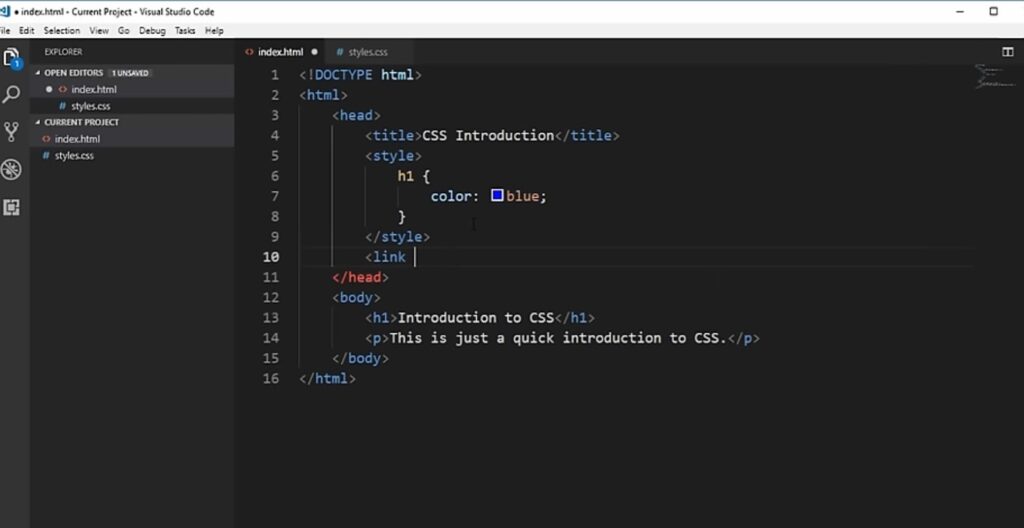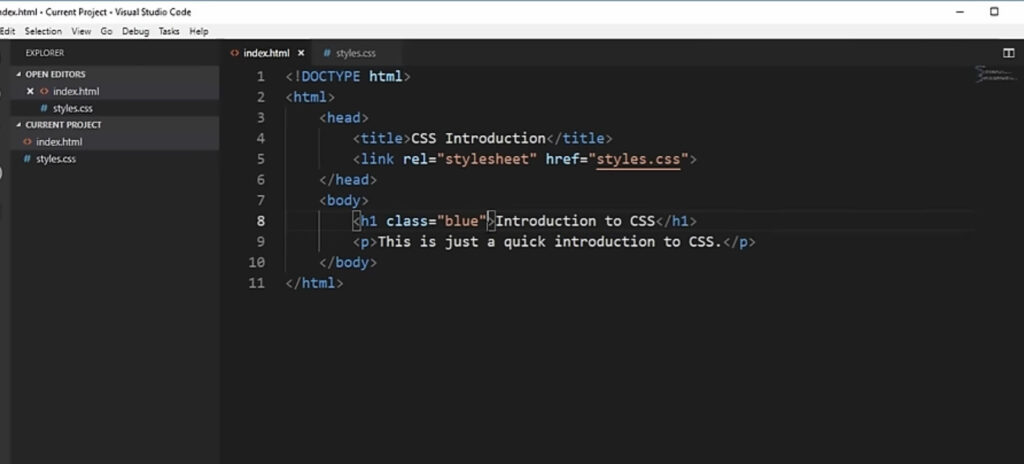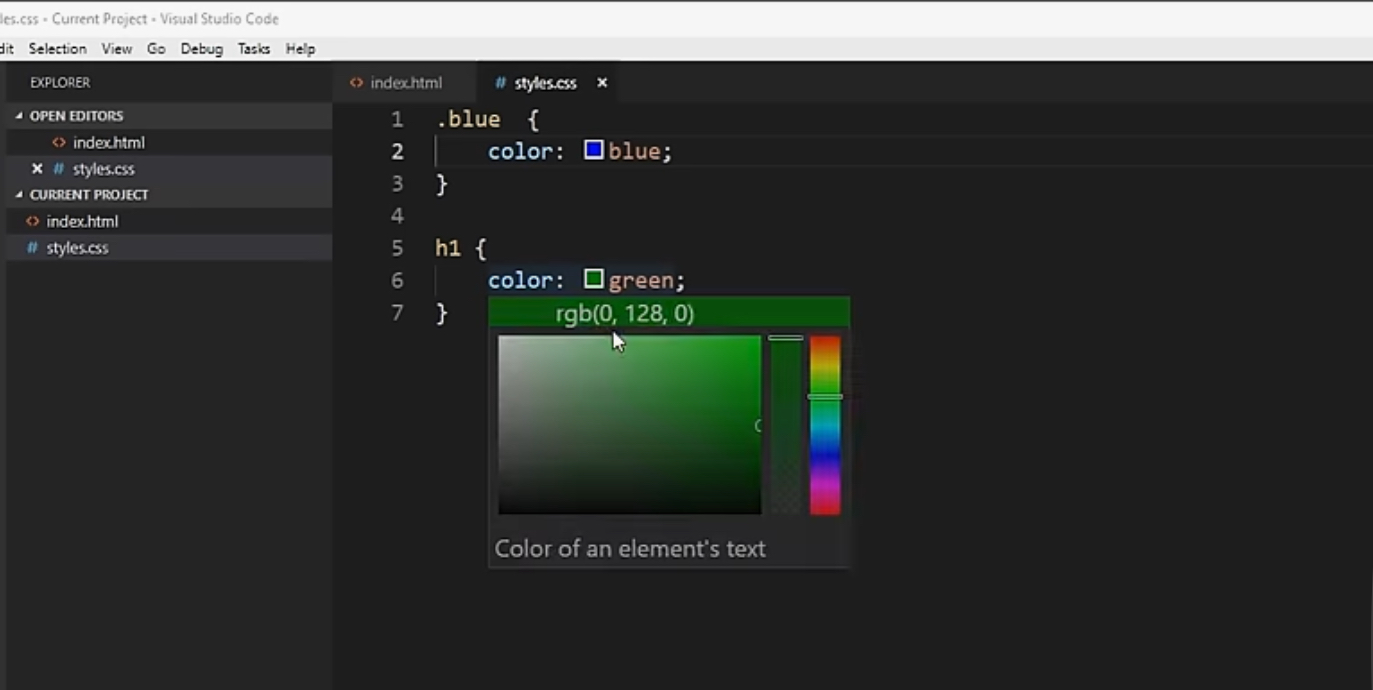Have you ever wondered how to spruce up your web pages by dynamically generating content? The CSS content property offers a seamless way to achieve this, allowing for the injection of content before or after the rendering of an HTML element. This feature, when combined with pseudo-elements, empowers developers to enrich web pages with automatically generated text and images.
This guide will delve into the workings of the CSS content property, showcasing its potential to dynamically enhance templates with added content and style.
Understanding the CSS Content Property
At the core of CSS’s capability to inject generated content into web pages lies the content property. This tool is instrumental in adding content to HTML elements without altering the original HTML code, primarily through the use of pseudo-elements like ::before and ::after. Grasping the mechanics and versatile applications of the content property is essential for developers looking to elevate their web pages’ aesthetic and functionality.
For those keen on deepening their understanding of CSS pseudo-elements, an instructional video is recommended viewing.
The Value of the CSS Content Property
The content property is indispensable in web development, offering a multifaceted approach to augmenting HTML element styling. Its significance is highlighted by several advantages:
- Dynamic Content Addition: It facilitates the dynamic insertion of content, catering to needs for real-time content generation or external data incorporation;
- Styling Pseudo-elements: By leveraging ::before and ::after, the property allows for the addition of aesthetic elements or information without changing the HTML structure;
- Boosting Accessibility: Thoughtful use of the content property can improve site accessibility, providing context through additional labels or text for screen reader users;
- Automated Numbering: Together with counters, it enables automatic element numbering, useful for ordered lists or sequential content organization;
- Decorative Flair: It permits the insertion of decorative icons or separators, enhancing a page’s visual appeal;
- Responsive Design: The property aids in crafting designs that adjust to varying screen sizes or device features.
For developers seeking to streamline their workflow, PureCode offers AI-generated responsive components, a time-saving resource for web projects.
Implementing the CSS Content Property
Utilizing the CSS content property involves inserting CSS-generated content into HTML elements, typically via ::before and ::after pseudo-elements. This capability allows developers to add content around the main content seamlessly, without altering the original HTML layout.
Consider the following example to illustrate the use of the content property in adding pre and post-element content:
```html
<!DOCTYPE html>
<html lang="en">
<head>
...
<style>
/ Example CSS /
.custom-content::before {
content: "Before Text: ";
...
}
.custom-content::after {
content: " After Text.";
...
}
</style>
...
</head>
<body>
<div class="custom-content">This is the main content.</div>
</body>
</html>
```In this scenario, the “.custom-content::before” and “.custom-content::after” selectors are employed to prepend and append content, respectively, enhancing the element’s presentation.
Beyond text, the content property is adept at incorporating images, icons, and quotes, further expanding its utility in web design. Whether it’s inserting images with the `url()` function, leveraging icon fonts like Font Awesome, or styling quotations, the content property serves as a versatile tool for creative content integration.
By understanding and applying these concepts, developers can significantly enhance the visual and functional aspects of their web projects, making the CSS content property a valuable asset in web development endeavors.
Advanced Techniques with CSS Content
Exploring the capabilities of the CSS content property reveals methods that go beyond mere textual or decorative enhancements. Two sophisticated functionalities stand out: the attr() function for dynamic content integration and the innovative use of counter & counters functions for content management.
Leveraging the attr() Function for Dynamic Content Integration
The attr() function stands as a powerful tool in the CSS arsenal, allowing the injection of HTML attribute values directly into content. This function proves invaluable for dynamically updating styles based on attribute values, thus facilitating real-time content management without altering the underlying HTML structure.
For instance, consider the scenario where the “data-label” attribute’s value is dynamically displayed before an element:
```css
[data-label]::before {
content: attr(data-label);
font-weight: bold;
color: 3498db;
}
```This approach is particularly advantageous for inserting variable information like labels or captions, where the content may need to change based on user interaction or external data sources.
Utilizing Counter and Counters for Automated Content Numbering
The CSS specification introduces the counter and counters functions as mechanisms for creating and manipulating counters. These tools are instrumental in implementing automated numbering across web content, offering a structured and orderly presentation of information.
The following example demonstrates the automated numbering of items within an ordered list (ol), employing the counter functionality to incrementally label each list item:
```css
ol {
counter-reset: section; / Initialize the counter /
}
li::before {
content: counter(section) ". "; / Display the counter value /
counter-increment: section; / Increment the counter with each item /
}
```To complement the discussion, here’s a comprehensive HTML example illustrating the practical application of these advanced CSS content techniques:
```html
<!DOCTYPE html>
<html lang="en">
<head>
...
<style>
/ Dynamic Content with attr() Function /
[data-label]::before {
content: attr(data-label);
...
}
/ Automated Numbering with Counter and Counters /
ol {
counter-reset: section;
...
}
li::before {
content: counter(section) ". ";
...
}
</style>
<title>Advanced CSS Content Techniques</title>
</head>
<body>
<p data-label="Dynamic Label">This paragraph features a dynamically set label.</p>
<ol>
<li>Item 1</li>
<li>Item 2</li>
<li>Item 3</li>
</ol>
</body>
</html>
```In this comprehensive example, dynamic content generation is achieved through the attr() function, while automatic numbering is facilitated by the thoughtful application of counter and counter-reset, showcasing the CSS content property’s versatility in creating sophisticated and dynamic web presentations.

CSS Content Property in Responsive Design
The CSS content property plays a pivotal role in responsive design, enabling content adaptation and customization across various screen sizes. Here are some ways the content property contributes to responsive web design:
- Media Queries: By integrating the content property within media queries, developers can tailor content to specific device conditions, ensuring an optimal viewing experience across all devices. This powerful combination allows for the display of customized messages or stylistic changes that respond to the user’s screen size or orientation. For instance, a website could display different navigational prompts (“Swipe” on mobile vs. “Click” on desktop) based on the viewing context. This responsive design approach not only improves usability but also contributes to a more personalized user experience, making websites more intuitive and user-friendly across a wide range of devices and screen sizes;
- Content Adaptation: The ability to dynamically adjust content placement or style for responsive layouts allows for more nuanced design decisions, catering to the diverse screen real estate available on different devices. This flexibility is crucial in the era of mobile-first design, where content must flow seamlessly across devices of varying sizes. Content adaptation goes beyond simple repositioning; it involves adjusting font sizes, altering images, or even changing content types to fit the context better. Such adaptability enhances the readability and accessibility of websites, ensuring that all users, regardless of their device, can enjoy a cohesive and engaging online experience;
- Conditional Content Display: Employing the content property for conditional content visibility ensures that information is presented in a context-appropriate manner, enhancing user interaction and engagement. This technique can be particularly effective in scenarios where screen real estate is limited, such as on mobile devices, allowing for the prioritization of content based on the available space. By hiding or displaying specific content elements in response to viewport sizes, developers can craft more focused and effective user experiences. This strategic presentation of content helps minimize information overload for the user, ensuring that key messages are conveyed efficiently and clearly, thus improving the overall usability and satisfaction of web experiences.
Best Practices for Utilizing CSS Content
When leveraging the CSS content property, several best practices ensure optimal performance and accessibility:
- Screen Reader Compatibility: Verify that dynamically inserted content is accurately conveyed by screen readers;
- Visual Contrast and Readability: Maintain high contrast and readability between inserted content and its background;
- Responsive Considerations: Ensure that content modifications are responsive and seamlessly adapt to various screen sizes;
- Content Relevance: Avoid overwhelming users with excessive inserted content; prioritize conciseness and relevance;
- Accessibility Enhancements: Utilize ARIA roles where appropriate to improve the accessibility of dynamic or interactive content.
Semantic Application of CSS Content Property
Employing the CSS content property semantically entails using it in a manner that preserves and enhances the HTML document’s meaning and structure. This approach not only facilitates accessibility but also supports SEO efforts by providing search engines with additional context, thereby improving the user experience and the site’s visibility. Semantic use of the content property ensures that any dynamically generated content serves a purposeful role, complementing the document’s content rather than merely serving as a decorative element. This practice is essential for maintaining the integrity of web content, ensuring that all users, including those with disabilities, can access and understand the information presented. By thoughtfully integrating generated content, developers can create more engaging, informative, and accessible web experiences. Moreover, semantic usage aligns with best practices for web development, reinforcing the importance of content’s role in SEO strategies. Search engines favor websites that offer a coherent, accessible, and user-friendly experience, and semantically used CSS content contributes positively to these criteria. Thus, this method not only enhances the presentation of web pages but also plays a crucial role in ensuring that websites are optimized for both users and search engines, promoting a more inclusive and discoverable web environment.
Navigating Challenges with the CSS Content Property
While the CSS content property enhances web styling with its versatility, it’s not without its obstacles. Recognizing and addressing these hurdles can facilitate smoother web development processes. This section offers insights into these common challenges and strategies to mitigate them:
- Issues with Space or Separators
One frequent oversight is omitting spaces or separators, causing generated content to merge with existing content, leading to cluttered or confusing visuals.
Solution: Incorporate spaces or separators within the `content` declaration to ensure clarity and separation.
```css
.article::before {
content: "Latest Article: ";
}
```- Handling Quotation Marks and Escaping Characters
Unescaped quotation marks within the `content` value can disrupt the intended output, especially with nested quotations.
Solution: Utilize escaping techniques or alternate between single and double quotes to avoid parsing errors.
```css
.quote::before {
content: "Quoted text 'Another quote within a quote'";
}
```- Dealing with Empty Content
Assigning an empty string to the `content` property might lead to rendering issues or invisible content.
Solution: Always ensure the `content` contains meaningful data or set a placeholder to avoid empty renderings.
```css
.empty-content::before {
content: "No content available";
}
```- Dynamic Content Insertion Hurdles
The `attr()` function’s inconsistent behavior across browsers can complicate dynamic content insertion.
Solution: Confirm browser support for the `attr()` function and consider JavaScript as an alternative for dynamic content management.
```css
[data-label]::before {
content: attr(data-label);
}
```- Counters and Compatibility Issues
Using counters may encounter limited browser support or conflicts with other CSS properties.
Solution: Validate browser support for counters and explore fallbacks or alternate methods for numbering.
```css
ol {
counter-reset: section;
}
li::before {
content: counter(section) ". ";
counter-increment: section;
}
```- The Pitfalls of Overutilizing the `content` Property
Excessive reliance on the `content` property can lead to convoluted and hard-to-maintain codebases.
Solution: Aim for style consolidation, leverage actual HTML for complex implementations, and prioritize code readability and maintenance.
```css
.overuse::before {
content: "Note: ";
}
.overuse::after {
content: " End of note.";
}
```Emphasizing regular testing, comprehending browser compatibilities, and keeping styles organized are key practices for a smooth web development journey.

Enhancing Web Design with Dynamic CSS Content
The CSS content property is invaluable for applying intricate styles to HTML templates without modifying the HTML itself. This guide has unpacked the functionality of the `content` property, including dynamic content addition and list numbering customization through counters.
For developers looking to expedite their workflow, PureCode’s extensive gallery of responsive templates, compatible with CSS3, Tailwind CSS, and Material UI, offers over 10,000 options to streamline project development.
To Wrap Up
In conclusion, mastering the CSS content property unlocks a realm of possibilities for web developers and designers alike, allowing for dynamic, responsive, and visually compelling web pages without the need for altering the underlying HTML structure. From inserting simple texts to leveraging advanced techniques like the `attr()` function for dynamic content and utilizing counters for automatic numbering, the content property is a testament to CSS’s flexibility and power. However, as with any powerful tool, it comes with its challenges, including browser compatibility issues, the necessity for escaping characters, and the potential for overuse leading to less maintainable code. By understanding these pitfalls and applying best practices—such as regular testing, ensuring accessibility, and maintaining clean and organized code—developers can effectively navigate these challenges.
Furthermore, the exploration of frequently asked questions underscores the importance of using the content property judiciously, with a focus on enhancing user experience and accessibility. As web development continues to evolve, the CSS content property remains a crucial element in the designer’s toolkit, offering the means to create more engaging, accessible, and responsive websites.
FAQs:
The `content` property is pivotal for injecting generated content into web pages via pseudo-elements, enriching web page presentation without altering HTML structure. This unique feature of CSS allows developers to add content dynamically, offering a way to introduce text, images, or other stylistic elements directly through CSS. It’s particularly useful for adding decorative icons, automated numbering, or contextual tooltips that enhance the user interface without cluttering the HTML with additional elements. By leveraging this property, designers can maintain a cleaner HTML structure while achieving complex visual effects, making the web development process more efficient and manageable. The ability to insert content conditionally, based on attributes or in response to media queries, further underscores its utility in creating responsive and adaptive web designs.
For text with line breaks, utilize the `\A` escape sequence and set `white-space: pre;` to preserve the formatting. This approach allows designers to introduce multi-line text within pseudo-elements, a feature that is especially handy for creating tooltips, captions, or any content that benefits from formatting across several lines.
“`css
.example::before {
content: “First line \A Second line”;
white-space: pre;
}
“`
Incorporating line breaks enriches the possibilities for content presentation, enabling more expressive and informative designs. This method bridges the gap between the limitations of CSS and the demands of modern web design, where conveying information clearly and attractively is paramount. By manipulating white space and text, developers can create more engaging and readable content, enhancing the overall user experience.
It’s specifically designed for use with pseudo-elements (::before and ::after) and does not apply universally across all HTML elements. This limitation ensures that the `content` property is used in a way that complements the semantic structure of HTML documents, rather than replacing or duplicating existing elements. By focusing on pseudo-elements, CSS maintains a clear separation of concerns, where HTML is responsible for the document’s structure and content, while CSS handles presentation and layout. This distinction is crucial for accessibility and maintainability, as it helps prevent the misuse of CSS for content that should be semantically represented in HTML, ensuring that web pages are accessible to all users, including those using assistive technologies.
Direct insertion of HTML elements is beyond its scope; however, it can dynamically showcase HTML attribute values via the `attr()` function. This capability is particularly useful for displaying data that may change or needs to be reused across different parts of a website, such as dynamically generated content from a database or user input. While the `content` property cannot create new HTML elements, this feature provides a flexible way to include additional information without altering the HTML structure. It’s a creative solution for enhancing the user interface with dynamic data, making web pages more interactive and personalized. Despite its limitations, the `content` property remains a powerful tool for web developers looking to innovate and push the boundaries of what can be achieved with CSS alone.
When utilized thoughtfully, the `content` property does not adversely affect SEO. Ensuring content is accessible and user-friendly remains paramount. Since search engines prioritize content that enhances the user experience, the strategic use of the `content` property can contribute positively to a website’s SEO strategy. However, it’s important to remember that content generated via CSS may not be indexed by search engines in the same way that HTML content is. Therefore, it should not be used for critical content that contributes to the site’s SEO value. Instead, its use should be reserved for decorative elements, stylistic enhancements, or non-essential informational text. By adhering to these guidelines, developers can leverage the `content` property to improve the aesthetic and functional aspects of a website without compromising its search engine visibility or accessibility.



